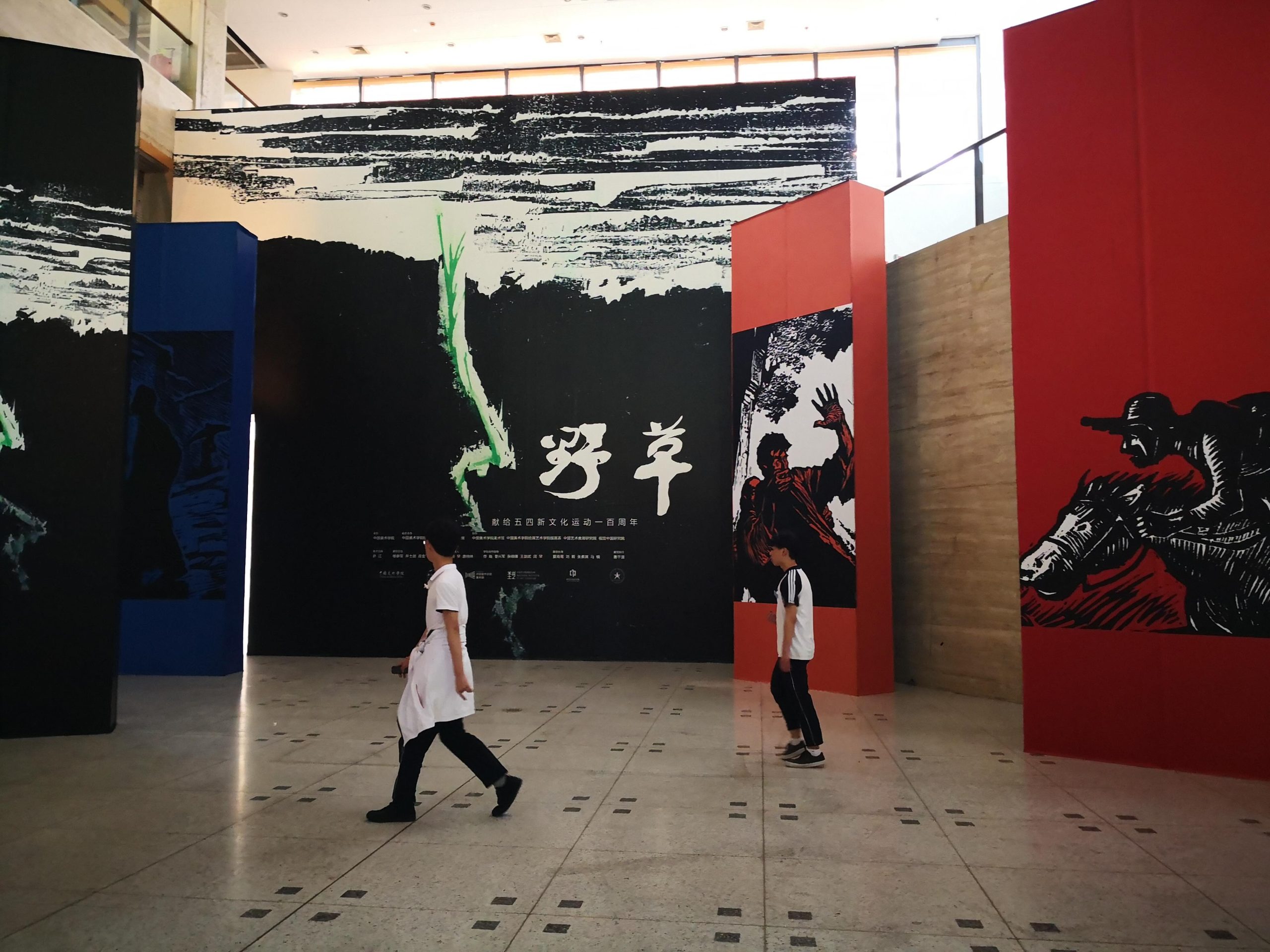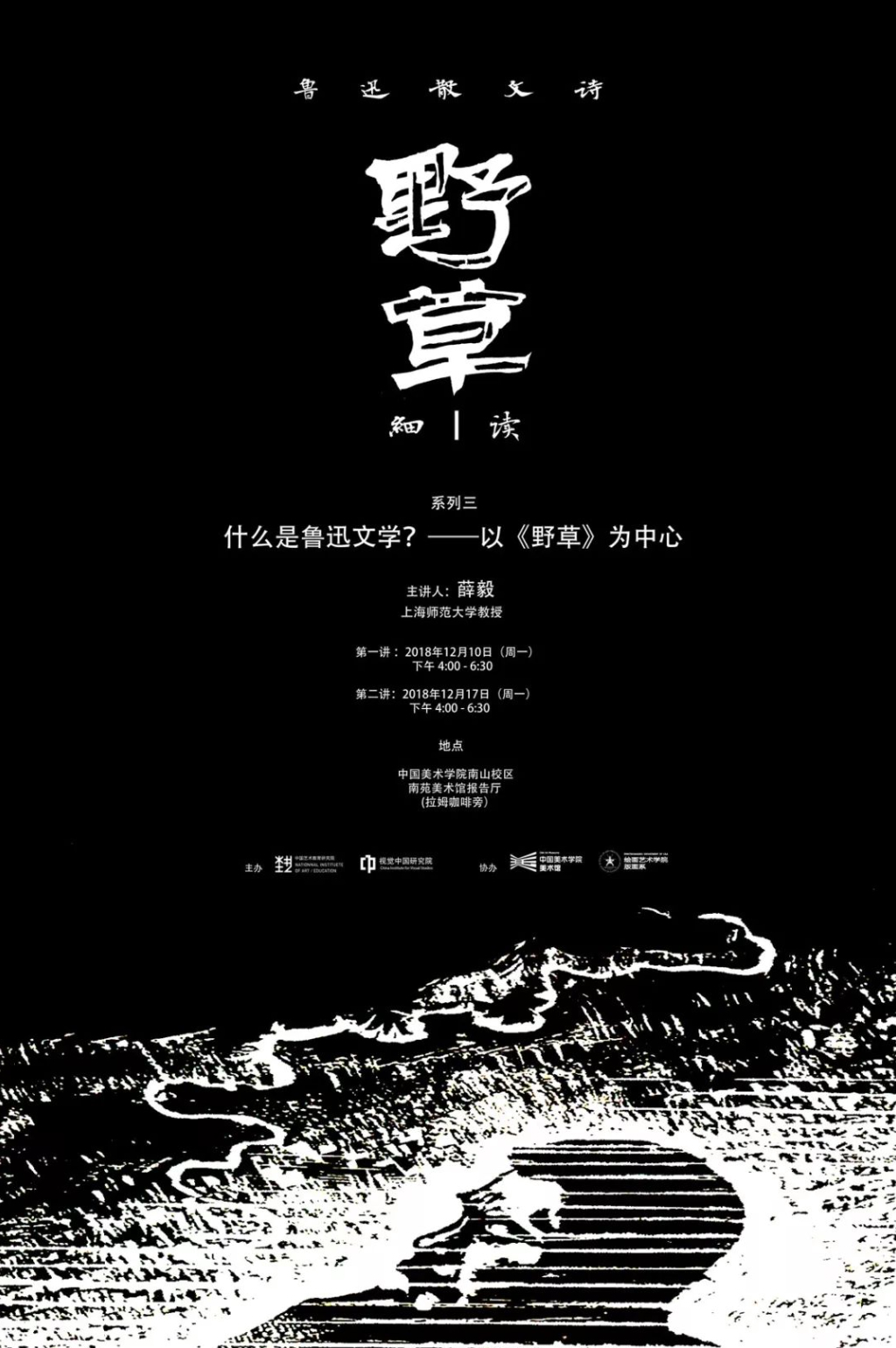2018-2019

'Amidst the fervor of grand song, there is coldness; in the heavens, one sees the abyss. In the eyes of all, there is nothingness; amidst hopelessness, one finds salvation.'
—— Lu Xun's Wild Grass
To commemorate the centennial of the May Fourth Movement, China Academy of Art launched the Wild Grass Project in September 2018, inspired by Lu Xun’s Wild Grass. The project invited scholars and researchers to conduct a series of ten lectures titled A Close Reading of Lu Xun’s Prose Poems in Wild Grass, guiding students and faculty in a collective reading of the work. This led to the exhibition Wild Grass—A Tribute to the 100th Anniversary of the May Fourth New Culture Movement.
Within the history of 20th century Chinese literature, Wild Grass possesses a distinctive strength, preserving the raw state of Classical Chinese transitioning into modern vernacular Chinese. Its formal expression, and the spirit and energy that permeate its language, are immensely powerful.
In the exhibition, Lu Xun’s powerful text was combined with another potent aesthetic medium—monochrome woodcuts. Curated by Min Han and Tang Xiaolin, the exhibition adopted a distinctly contemporary curatorial stance, to create a transcendent dialogue spanning a century. It connected Lu Xun’s Wild Grass with significant woodcut works by several generations of artists inspired by Lu Xun, as well as woodcuts and illustrations by current students of the academy. The exhibition also featured a soundscape of Wild Grass readings by people of various backgrounds and ages, buiding a new literary engine to the drive the text in 2019.
The Wild Grass lecture series included: Sun Ge’s Beyond Despair and Hope: A Close Reading of Lu Xun’s Wild Grass (published in 2020), Xue Yi’s What Is Lu Xun's Literature?, Jiang Ruoshui’s On the Visual Art of Wild Grass and On the Auditory Art of Wild Grass, and Lu Xinghua’s The Self-Rehearsal of the Chinese Literary Subject: Keep Going!—Curating Wild Grass in the Anthropocene.

'Amidst the fervor of grand song, there is coldness; in the heavens, one sees the abyss. In the eyes of all, there is nothingness; amidst hopelessness, one finds salvation.'
—— Lu Xun's Wild Grass
To commemorate the centennial of the May Fourth Movement, China Academy of Art launched the Wild Grass Project in September 2018, inspired by Lu Xun’s Wild Grass. The project invited scholars and researchers to conduct a series of ten lectures titled A Close Reading of Lu Xun’s Prose Poems in Wild Grass, guiding students and faculty in a collective reading of the work. This led to the exhibition Wild Grass—A Tribute to the 100th Anniversary of the May Fourth New Culture Movement.
Within the history of 20th century Chinese literature, Wild Grass possesses a distinctive strength, preserving the raw state of Classical Chinese transitioning into modern vernacular Chinese. Its formal expression, and the spirit and energy that permeate its language, are immensely powerful.
In the exhibition, Lu Xun’s powerful text was combined with another potent aesthetic medium—monochrome woodcuts. Curated by Min Han and Tang Xiaolin, the exhibition adopted a distinctly contemporary curatorial stance, to create a transcendent dialogue spanning a century. It connected Lu Xun’s Wild Grass with significant woodcut works by several generations of artists inspired by Lu Xun, as well as woodcuts and illustrations by current students of the academy. The exhibition also featured a soundscape of Wild Grass readings by people of various backgrounds and ages, buiding a new literary engine to the drive the text in 2019.
The Wild Grass lecture series included: Sun Ge’s Beyond Despair and Hope: A Close Reading of Lu Xun’s Wild Grass (published in 2020), Xue Yi’s What Is Lu Xun's Literature?, Jiang Ruoshui’s On the Visual Art of Wild Grass and On the Auditory Art of Wild Grass, and Lu Xinghua’s The Self-Rehearsal of the Chinese Literary Subject: Keep Going!—Curating Wild Grass in the Anthropocene.



